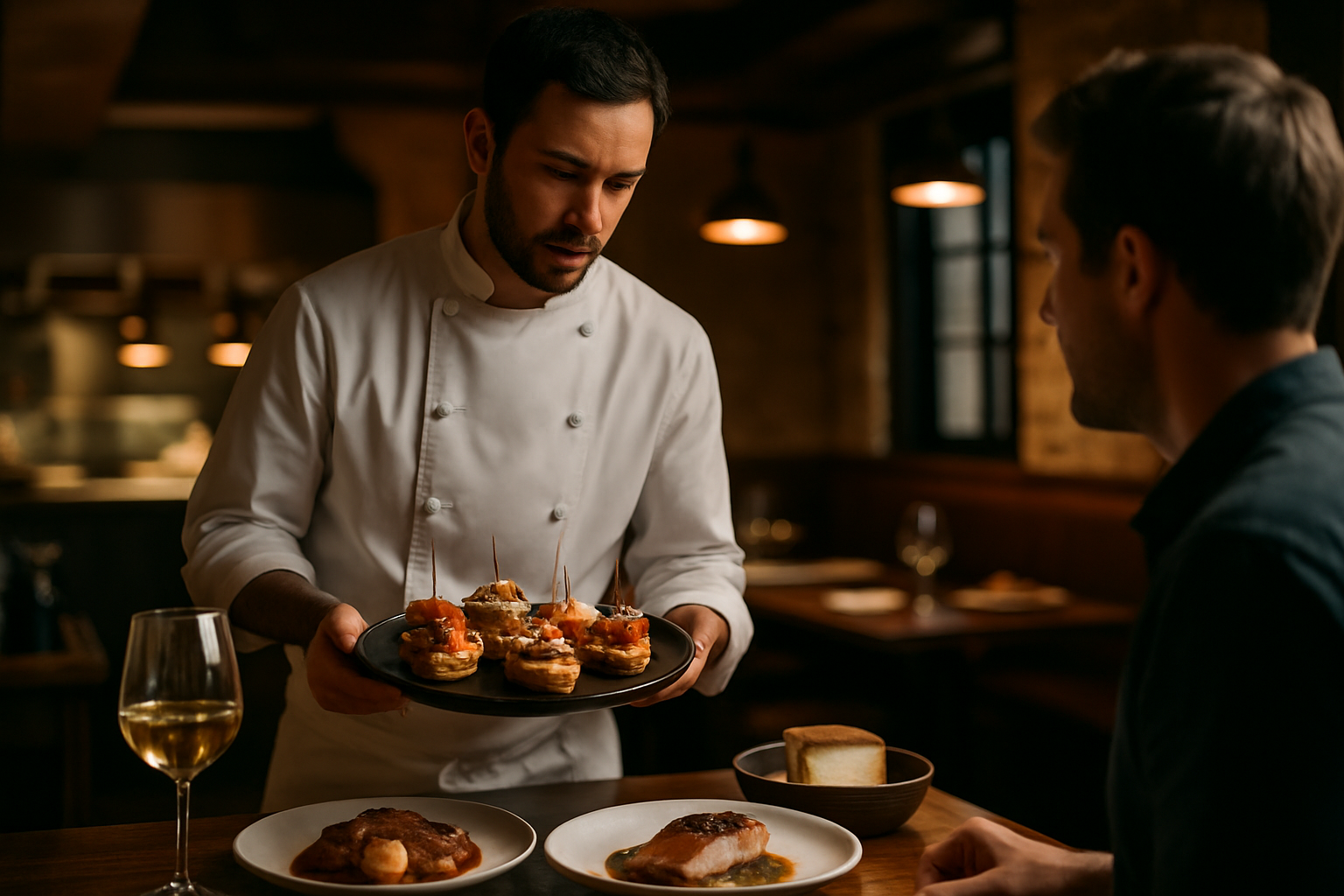Inside Modern Restaurant Environments Across Europe: How Coordination, Culture, and Service Shape Today’s Hospitality
Across Italy, France, and the Netherlands, restaurant environments continue to evolve as dining habits, guest expectations, and service methods shift across Europe. Rather than focusing on specific roles or hiring processes, understanding how restaurants function day to day offers a clearer view of what defines modern hospitality. From kitchen coordination to front-of-house communication, each part of the environment contributes to the overall rhythm of the dining experience. Exploring these routines reveals how structure, teamwork, and cultural influences shape the way restaurants operate in different regions—blending tradition with contemporary approaches to service.

How Restaurants Coordinate Daily Service
Successful restaurant operations depend on meticulous coordination across multiple teams working simultaneously. The kitchen brigade system, rooted in French culinary tradition, remains foundational in many European establishments. Chefs de partie manage specific stations—sauces, grills, pastry—while communicators relay orders between front and back of house. Modern restaurants increasingly use digital kitchen display systems that replace traditional paper tickets, reducing errors and improving timing. Prep schedules begin hours before service, with mise en place ensuring every ingredient is measured, chopped, and ready. Reservation systems now integrate with table management software, allowing hosts to optimize seating flow and predict kitchen load. During peak hours, expeditors coordinate dish timing so entire tables receive meals simultaneously, requiring split-second judgment and clear verbal communication across noisy environments.
Front-of-House Communication in Modern Dining
The visible face of hospitality relies on seamless information exchange between servers, hosts, bartenders, and management. Pre-service briefings cover menu changes, ingredient availability, special dietary accommodations, and guest preferences noted in reservation systems. Many European restaurants employ multilingual staff to accommodate international visitors, with English serving as a common bridge language alongside local tongues. Servers use point-of-sale tablets that instantly transmit orders to kitchen stations while tracking course timing and special requests. Body language and subtle signals help staff communicate without disrupting guest experiences—a raised hand might signal assistance needed, while specific table positions indicate service stages. Team members often rotate roles throughout shifts, building comprehensive understanding of operations. This cross-training proves essential when unexpected absences occur or during particularly busy periods when flexibility determines success.
Behind-the-Scenes Routines in European Restaurants
Daily operations extend far beyond meal service hours. Morning routines include receiving deliveries, checking inventory levels, and verifying ingredient quality. Prep cooks transform raw materials into components used throughout service—stocks simmer for hours, vegetables are precisely cut, and proteins are portioned. Cleaning protocols maintain health standards, with dedicated staff sanitizing surfaces, equipment, and dining areas continuously. Many establishments hold family meals where staff eat together before service, fostering camaraderie and allowing management to share information. Post-service breakdowns involve storing perishables, cleaning cooking equipment, and preparing stations for the next shift. Administrative tasks include reviewing financial performance, adjusting orders based on consumption patterns, and scheduling staff to match anticipated demand. Maintenance teams address equipment issues promptly, as a malfunctioning oven or refrigeration unit can derail entire services.
How Cultural Traditions Influence Dining Environments
European restaurants reflect distinct regional identities shaped by centuries of culinary heritage. Mediterranean establishments often emphasize communal dining, with shared plates and extended meal times reflecting cultural values around food as social glue. Northern European venues may adopt more structured service styles with clearly defined courses and precise timing. Traditional ingredients and preparation methods remain central to authenticity—Italian restaurants maintain strict standards for pasta preparation, while Spanish tapas bars preserve centuries-old recipes. Architectural elements reinforce cultural identity, from rustic exposed beams in countryside establishments to sleek minimalism in urban settings. Seasonal eating patterns, deeply rooted in agricultural traditions, influence menu rotations and ingredient sourcing. Many family-owned restaurants pass recipes and techniques through generations, maintaining continuity while adapting to contemporary tastes. Wine and beverage programs reflect regional production, with sommeliers curating selections that complement local cuisine and educate guests about terroir.
Service Trends Shaping Hospitality in 2025
The hospitality sector continues adapting to shifting guest expectations and operational realities. Sustainability has moved from niche concern to operational imperative, with restaurants reducing food waste through precise inventory management and creative menu planning. Plant-forward menus accommodate growing demand for vegetarian and vegan options without alienating traditional diners. Technology integration extends beyond kitchen systems to guest-facing applications—QR code menus, contactless payment, and reservation apps that remember dietary preferences. Hybrid service models blur traditional boundaries, with fine dining establishments offering casual lunch formats or takeaway options. Transparency around sourcing has become standard, with menus detailing farm origins and fishing methods. Staff well-being receives increased attention, as the industry addresses historically high turnover through improved scheduling, mental health support, and career development pathways. Experiential dining incorporates theatrical elements, open kitchens, and chef interactions that transform meals into memorable events. Allergen awareness and accommodation for dietary restrictions require comprehensive staff training and kitchen protocols to ensure guest safety.
The Human Element Behind Hospitality Excellence
Despite technological advances, human connection remains central to exceptional dining experiences. Experienced servers read guest moods, adjusting interaction styles from attentive to discreet as situations demand. Sommeliers guide wine selections through conversation rather than intimidation, making expertise accessible. Kitchen teams develop rhythms and communication styles that allow them to function cohesively under pressure. Management balances operational efficiency with staff morale, recognizing that satisfied employees deliver better guest experiences. Regulars develop relationships with staff who remember preferences and create personalized touches. Training programs increasingly emphasize emotional intelligence alongside technical skills, preparing staff to handle diverse situations gracefully. The most successful establishments cultivate cultures where every team member understands their role in creating memorable moments, from the dishwasher ensuring spotless plates to the host offering genuine welcomes.
Modern European restaurants represent complex organizations where operational precision meets cultural heritage and human warmth. As the industry continues evolving, the fundamentals of coordination, communication, and genuine hospitality remain constant, adapted through new technologies and changing expectations while preserving the essential elements that make dining out a cherished social ritual.




